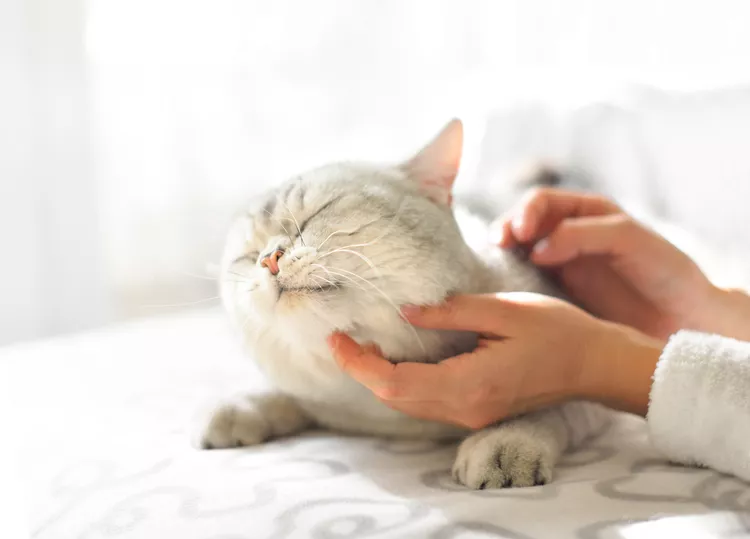Managing Cats With Epilepsy and/or Seizures

Cat seizure medications are often used to control seizures and epilepsy in cats, but they're not always necessary. Before considering anticonvulsants, your veterinarian will look for an underlying cause of the cat's seizures. Here's how vets determine if cat seizure medications are needed.
When Are Cat Seizure Medications Needed?
Seizures in cats can occur for many different reasons, and uncovering the underlying cause can help you and your veterinarian determine the best treatment. However, sometimes the condition causing seizures cannot be cured or treated. In many cases, the underlying cause of feline seizures cannot be determined and the vet will diagnose the cat with idiopathic epilepsy.
Cats with frequent recurrent seizures may need to be treated with anticonvulsant medications. However, there are a few things to consider before starting your cat on an anticonvulsant.
- Frequency: If the seizures occur infrequently (less than once every four to six weeks), it may not be necessary to treat your cat for the seizures.
- Severity: If your cat's seizures are especially severe, meaning they last more than 1 minute, or result in a prolonged state of disorientation or more severe signs, it may be advisable to start treatment (regardless of how frequently they occur).
- Cluster seizures: More than two seizures in 24 hours often warrant medication.
- Status epilepticus: This is defined as a single seizure lasting more than 5 minutes or multiple seizures in a short period without fully recovering in between. Anticonvulsants are especially important in these cases.
Your vet will determine if seizure medications are needed to improve your cat's quality of life and reduce the risk of serious complications from seizures.
Types of Cat Seizure Medications
Anticonvulsants are medications that can reduce or eliminate seizures in cats. Your veterinarian will choose a medication based on the nature of your cat's seizures. If your cat continues to have frequent or severe seizures, the vet may change to a new medication or add a second drug to the treatment plan. Some of the most commonly used cat seizure medications include:
Phenobarbital
Phenobarbital is generally considered to be the first choice in treating seizures in cats. Currently, it is the most commonly used anticonvulsant drug for cats. It can have potential side effects, so it is important to discuss this with your veterinarian to ensure it is the right choice for your cat. Cats on phenobarbital will need their blood levels screened periodically.
Levetiracetam
Levetiracetam (Keppra) has also been used in cats to control seizures. It is a newer anticonvulsant medication that is usually used as an add-on medication for cats whose seizures are not well controlled with just one medication. Some veterinarians are now using levetiracetam as a first choice drug because they believe it may have fewer side effects, however, it has not been studied as thoroughly as some other drugs for this purpose.
Zonisamide
Zonisamide is another seizure medication that is being used more commonly in cats. Research has shown it to be reasonably effective and safe for cats. It also has the benefit and convenience of once-a-day dosing in cats, as opposed to some of the others that may require every 8 or 12-hour dosing.
Diazepam
Diazepam (Valium) used to be used to treat seizures in cats but is no longer recommended. While rare, it can cause a severe, fatal reaction in the liver of some cats. Due to the availability of newer, safer medications, diazepam is not recommended for ongoing treatment. It is sometimes used in an emergency setting to temporarily stop status epilepticus.
Potassium Bromide
Potassium Bromide is not recommended for use in cats. While it is used in some dogs with seizures, in cats it can cause lung disease.
Other Medications
Medications such as chlorazepate, pregabalin, and gabapentin have not been well-studied in cats for their anticonvulsant properties. Some veterinarians do use them to control seizures, especially as an add-on treatment in cats who are still having seizures while on another anticonvulsant. There is not a lot known about how these medications work in cats, and what types of side effects to expect long-term.
As research continues with these drugs, they may become more widely recommended for cats with seizures. For now, they are reserved for refractory cases where seizures are not well controlled with another medication, or cats who cannot tolerate the more widely used medications for some reason.
How to Use Cat Seizure Medications
Most cat seizure medications are given orally one to three times daily as a pill or liquid. Be sure to follow your veterinarian's instructions. Some may need to be given with or without food. Contact your vet if the seizures continue or if you notice side effects. Your cat will also need to see the vet more frequently to assess their condition and, in some cases, get blood work done.
Understand that once your cat starts on an anticonvulsant medication, they will likely remain on it for life. Discontinuing an anticonvulsant medication suddenly can be quite dangerous for your cat. Never stop giving the medication or change the dosage without checking with your vet first.
When anticonvulsant medications do need to be discontinued, it is best to withdraw the medication slowly and gradually, weaning your cat off the meds under veterinary supervision.
Note: This article has been provided for informational purposes only. If your pet is showing any signs of illness, consult a veterinarian as quickly as possible.